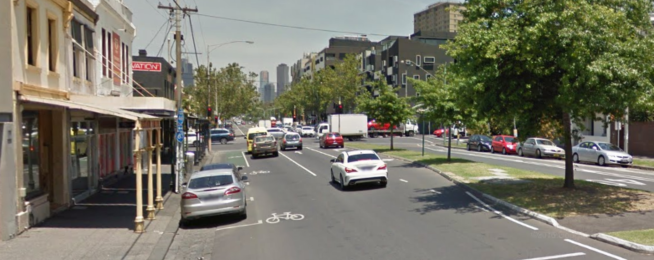University of Melbourne is partnering with Cubic Transportation System to roll out a number of smart cameras that watch road users and could control traffic flow accordingly – in real time.
Seven fish-eye cameras will be installed over the next few months above intersections along Rathdowne Street in Carlton as part of the Australian Integrated Multimodal Ecosystem (AIMES), led by Melbourne University professor Majid Sarvi.
Sarvi said that "our current transport system can only detect cars or trucks at one particular location, which is right behind the stop line. That was developed in 1979 or 1980 … and it has its limitation."
"For example, you don't know the length of the queue behind the intersection, how many cars are waiting, how many bicycles are waiting, or how many pedestrians are waiting on the sidewalk to cross. If you don't know, you cannot manage it."
"With this camera technology, all of this is possible. The good thing is they can analyse the whole traffic using the processing embedded into them, and you don't even need to lift the image from the camera."

For now the cameras will just be collecting and analysing data, complementing the existing 250-plus sensors that currently exist within the AIMES program. But the implications for road safety and traffic congestion in the future are exciting.
Similar cameras are already being used in some North American cities to manage traffic flow and protect vulnerable road users by capturing near misses.
Sarvi explains: "If we can collect data about those incidents, then we can think about what we can do now, can we change the signal setting somehow to reduce the risk of crashes … that's a perfect way to look at what is happening," he said.
And these cameras could have the potential to make adjustments in real time, without having to send footage back to a control room to be analysed.
This comes at an unprecedented and troubling time for traffic congestion in Melbourne and many other cities – as our transport habits are changing rapidly to accommodate huge spikes in walking and cycling during lockdown, as well as decreases in public transport capacities as restrictions begin to lift.
The evidence so far has shown that more people are jumping in their cars to avoid public transport, causing increased traffic congestion and risk to bike riders and pedestrians – two curves that this new technology could help flatten.
Professor Sarvi says the new cameras will be part of ongoing work by the university to "collect the right data, make sure it's correct, then look at how to use it, how to show the effectiveness of it."
The Department of Transport and the Transport Accident Commission has backed the research.
Become our friend
Find out more about Bicycle Network and support us in making it easier for people to ride bikes.


